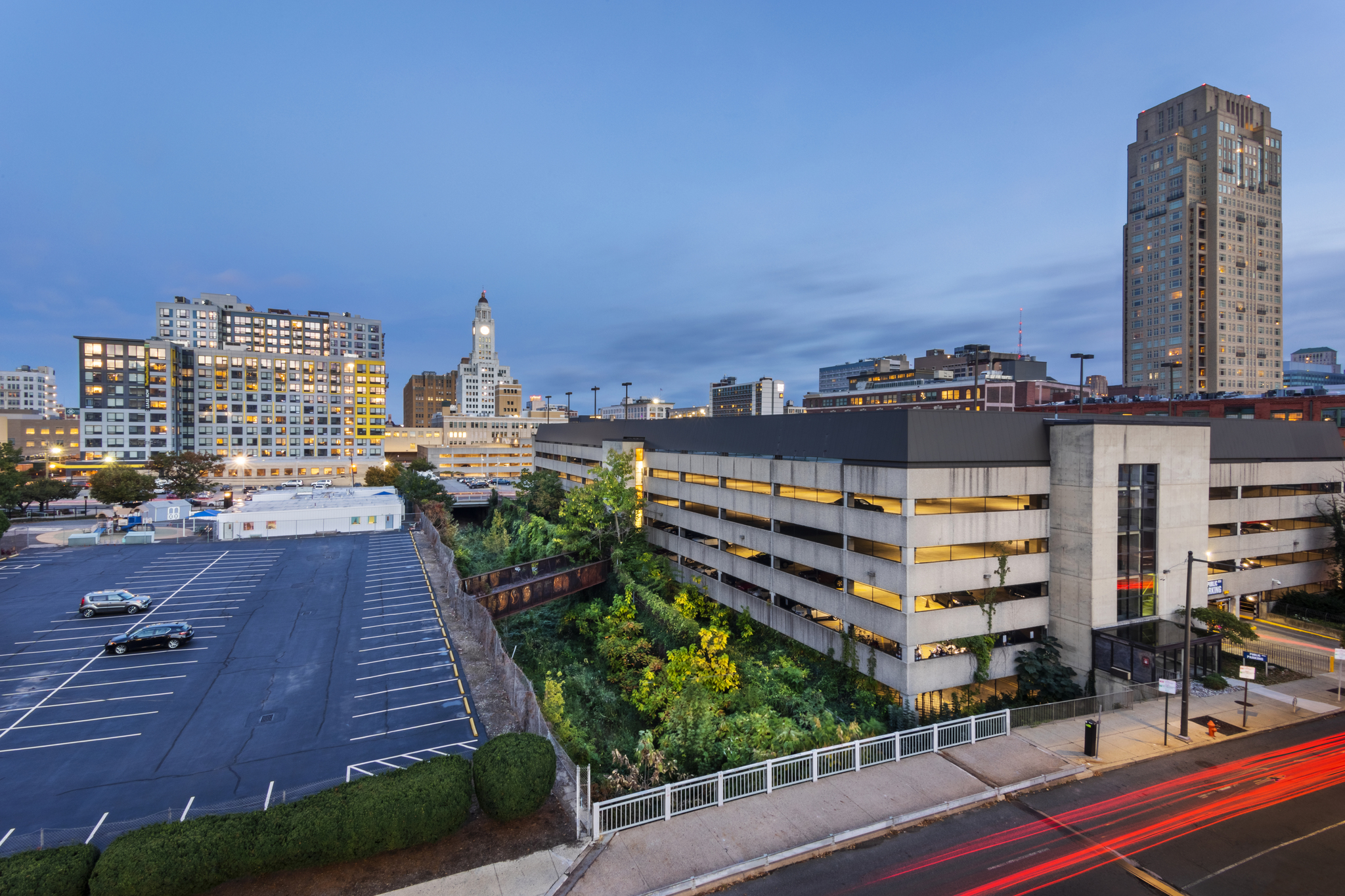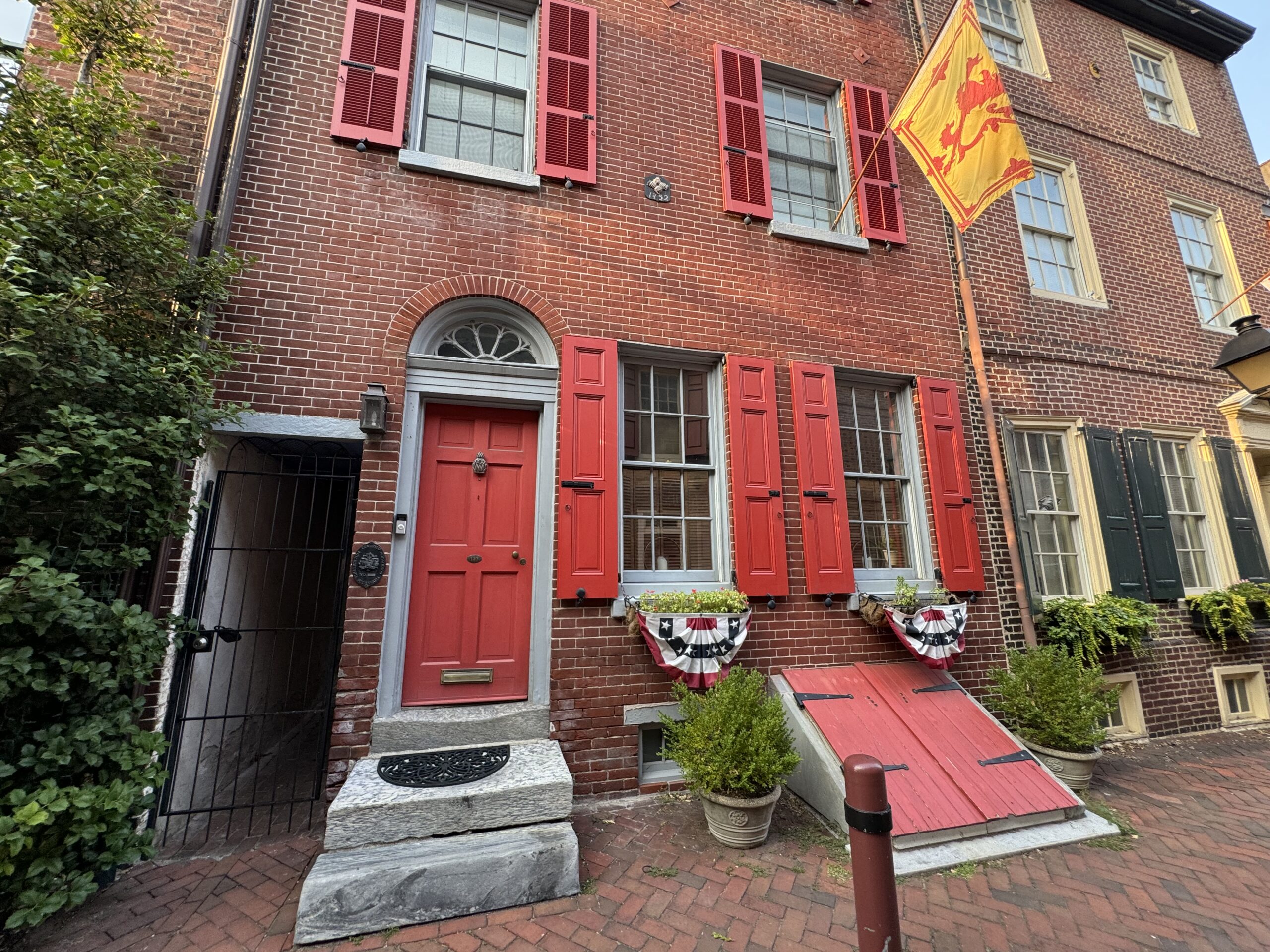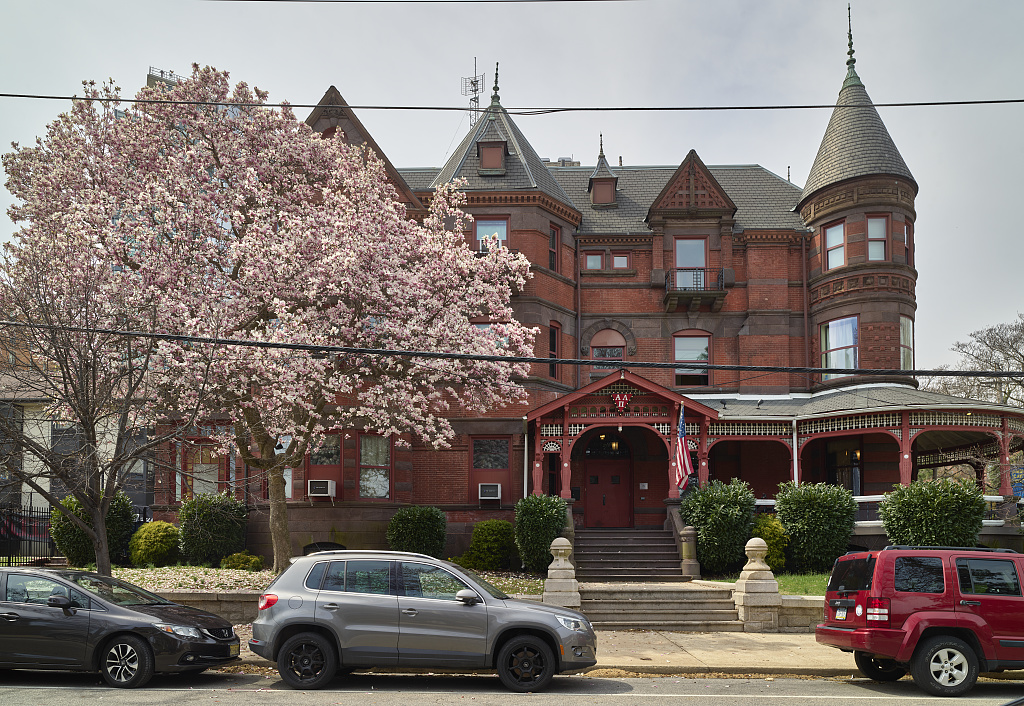architecture
A Walking Tour of Philadelphia’s Historic Houses of Worship

Christ Church. Image: P. Meyer for Visit Philadelphia
Philadelphia’s churches, synagogues, meeting houses, and cathedrals offer a vivid timeline of the city’s immigration history and diverse religious communities from the 1600s to today. This guide to Philadelphia’s historic houses of worship showcases the city’s rich architectural and cultural heritage. Put on your most comfortable walking shoes and discover some of the city’s most sacred and storied spaces.
Historic Houses of Worship (17th-19th Century)
The Arch Street Meeting House, 320 Arch St. in Old City, was designed in 1803-04 by Quaker master builder Owen Biddle Jr. It is a beautiful example of Georgian architectural style and it incorporates a simple Quaker design located across the street from the Betsy Ross House. It’s adjacent cemetery which dates back to 1701, hold more than 20,000 graves.
Christ Church, 24 N. 2nd St. in Old City, is an Episcopalian Church founded in 1695 by members of the Church of England. A small wooden church was used until the congregation outgrew the building. They constructed the most elegant church in the 13 Colonies with the tallest steeple, reaching 196 feet. It is considered one of the nation’s most beautiful surviving 18th-century Georgian structures. Members included Ben Franklin, George Washington and Betsy Ross. Franklin and four other signers of the Declaration of Independence are buried in its nearby cemetery. In 2016, the Church’s historic steeple was in serious disrepair and leaning dangerously. Restoration began in 2019 and is now complete.
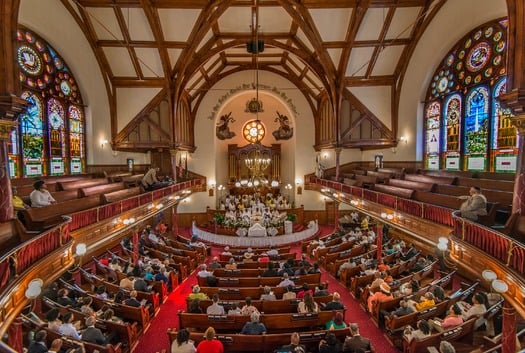
Mother Bethel African Methodist Episcopalian (AME) Church, 419 S. 6th St. in Queen Village, has been at this site since 1791. The Church originally worked out of the Free African Society (FAS), which African Americans established in Philadelphia in 1787, due to racial discrimination in St George Methodist Church. Its original name was Bethel Church but “Mother” represents the fact that it was the birthplace of the AME denomination which now has 13 locations throughout the South and West.
The majestic Cathedral Bascilica of St. Peter & Paul, 1723 Race St. on Logan Circle, was built in 1864 as the head church of the Roman Catholic Archdiocese of Philadelphia. Its architects, Napoleon LeBrun and John Notman designed the largest Catholic church in Pennsylvania, not long after the Philadelphia Anti-Catholic Riots. With a breathtaking sanctuary holding 2,000 worshipers, the Cathedral is the largest brownstone structure in Philadelphia.
In 1796, twenty of Philadelphia’s intellectual leaders formed the First Unitarian Society of Philadelphia and eventually created the First Unitarian Church, 2125 Chestnut st. Frank Furness, son of the Church’s first minister, designed the building dedicated in 1885. The church’s stained glass windows are by Louis Tiffany & Co. and John La Farge. The sanctuary features a hammer-beam ceiling, painted rust red and stenciled with gold-leaf daffodils, which is complemented by blue walls. Actor Kevin Bacon was raised at the First Unitarian Church of Philadelphia and had his first acting debut in a holiday pageant.
Congregation Mikveh Israel, is a Sephardic Orthodox Jewish synagogue located at 44 North Fourth Street. Founded in 1740 by Spanish and Portuguese Jews who emigrated from Amsterdam, it is the oldest synagogue in Philadelphia and the longest running in the United States. Known as the “Synagogue of the American Revolution,” it founders funded and fought in the Revolution. Mikveh Israel built its first synagogue in 1782 at Third and Cherry Streets. The newest building opened on July 4, 1976.
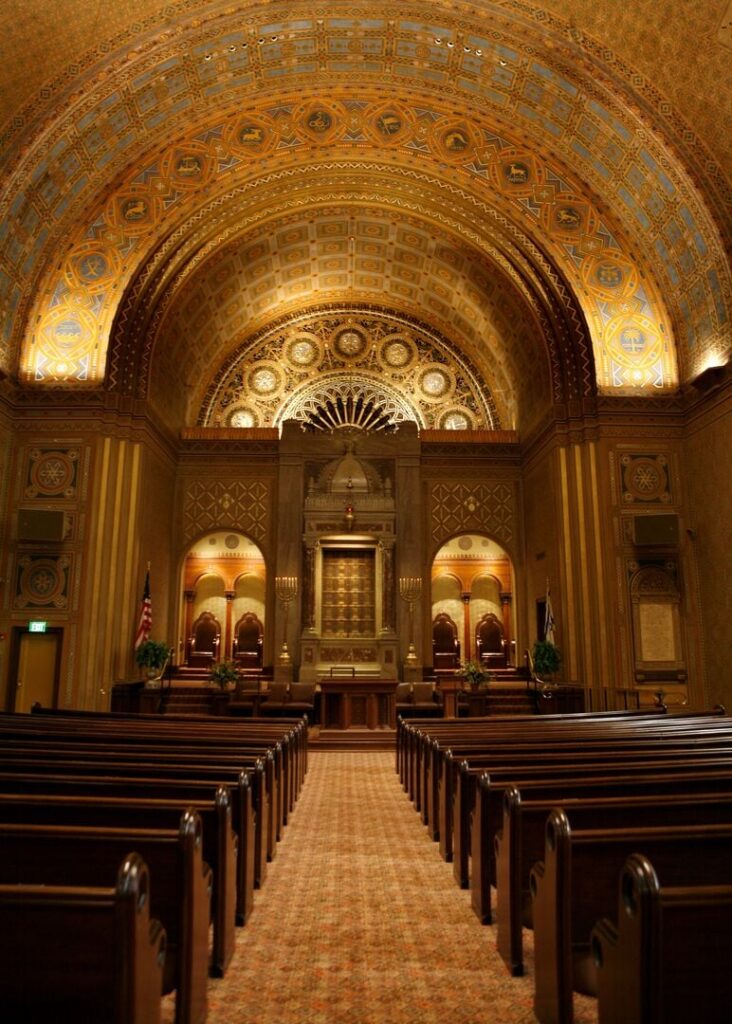
Congregation Rodeph Shalom, 615 N. Broad, established in 1795, is the oldest Ashkenazi (Eastern European) synagogue in the United States. It is also, quite possibly, the most beautiful. An earlier building, designed by Frank Furness in 1866, was demolished to make way for a larger synagogue designed by Simon & Simon in 1926 that fused Byzantine and Moorish Revival with Art Deco finishes. To appreciate its star-burst skylights, stained glass windows, bronze doors, and gold-leaf walls, you must enter the sanctuary. Tours are available.
Congregation Kesher Israel, a conservative Ashkenazi synagogue, 412 Lombard Street, was originally founded by Bnai Jacob Synagogue in 1883 and moved to its current location in 1889. Previously, the building had been a Unitarian Church constructed in 1796. Rodephe Tzedek, founded in 1887, merged with Bnai Jacob in 1894. They formed a new congregation called Kesher Israel. When the building fell into disrepair, a congregant donated $2 million to renovate the sanctuary and building. The project was completed in 1998.
Known as The Little Shul, Congregation Shivtei Yeshuron Ezras Israel, located at 2515 S 4th St. in the Pennsport section of South Philly, is a narrow, three story row house that traces its founding to 1876. It moved into its current building in 1909 and is the last remaining row-house synagogue in a City that once had over 150 row-house synagogues. When the largest wave of Eastern European Jewish immigrants arrived here, 1895-1920, the majority settled in South Philadelphia. They created a shul (synagogue), not just for every level of worship, but for every little village these immigrants left behind. The majority were from Ukraine.
Contemporary Houses of Worship
Frank Lloyd Wright only designed one synagogue in his life. It’s Beth Sholom Synagogue (House of Peace), 8231 Old York Rd.. in Elkins Park. Completed in 1959, it is a modernist translation of an ancient temple in the Mayan Revival style. Originally located in Logan, the synagogue moved to Elkins Park in the 1950s. The roof is 110 feet from floor to ceiling, giving the impression of rising towards the heavens. Tours are given by docents several days a week.
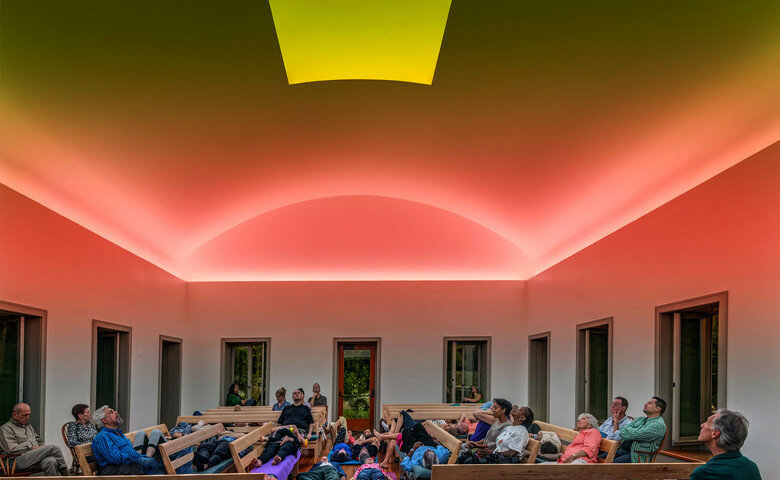
Chestnut Hill Friends Meeting, 20 E. Mermaid Lane gives a new meaning to what a Quaker meeting house should be. This one has a “Greet the Light Skyspace,” a permanent art installation by Quaker James Turrell, that creates glowing colors on the ceiling of the sanctuary. The room was created with an opening in the ceiling through which viewers see the sky. Quakers believe that there is “that of God” in every person and that this Inner Light can speak directly to each person, without an intermediary. Friends work against war, racism, poverty, and injustice. This “green” building was built in 2013. The original Meeting House was built in 1931. The new meeting house is the first to be built in Philadelphia in eighty years.
Philadelphia Churches and Synagogues with New Identities
Changes in neighborhood demographics and shifting populations have led many houses of worship to find new life. Churches have become synagogues, synagogues have become mosques, and some have transformed into community art centers.
One prime example is the former Episcopal Church of the Evangelist at 738 Catherine St. in Bella Vista. Originally founded in 1837 as a mission for the poor, this Romanesque Revival church is now part of Fleisher Art Memorial, which provides free and low-cost art education to the community.
Whether lovingly preserved, reimagined as community spaces, or still welcoming active congregations, Philadelphia’s historic churches, synagogues, and spiritual landmarks continue to reflect the evolving cultural and architectural fabric of the city. This self-guided tour is a meaningful way to explore the sacred spaces that have helped shape Philadelphia’s identity.





